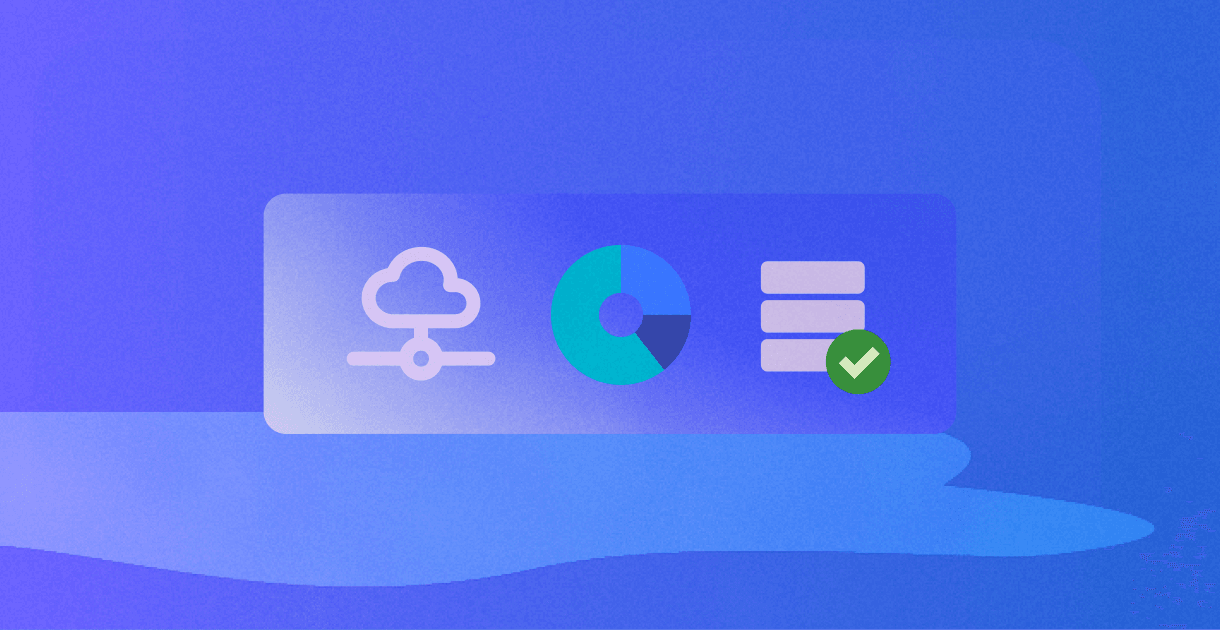On-Premise Isn’t Going Away: Here’s Why.

Why There Will Always Be a Case for On-Premise Enterprise Data Processing.
Cloud computing has benefitted from great PR. Cloud-based system advocates widely promoted its virtues and publicized successful migrations. As applications and data moved to the cloud, we all became familiar with the acronyms. SaaS, IaaS, PaaS, and more rapidly became standard terms used by everyone who had a role in planning or executing an organization’s computing strategy. Early concerns faded away as experience with cloud-based technologies convinced many IT professionals their data was safe if they processed or stored it on secure servers in the cloud.
You can be excused if you thought on-premise processing would slowly disappear as maintenance contracts came up for renewal. But that’s not what has happened.
Many organizations have evaluated the idea of relocating their critical systems to the cloud and decided it was the wrong move for them. At Firstlogic, a good portion of our largest customers are running on-premise platforms and have no plans to switch.
When considering data processing solutions, it’s crucial to understand the key differences between cloud-based and on-premise systems. Each approach has its own distinct advantages and potential drawbacks. Companies must dissect the key factors that influence the decision for their unique situation. The nature of the enterprise and its specific needs will determine the utility of each solution.
Pros of On-Premise Data Processing
Control: On-premise data processing allows companies full control over their data and systems. They can customize and configure their systems to suit their unique business requirements. On-premise solutions operate in a specific hardware and software setup. This arrangement can be beneficial for businesses with highly specialized needs that are not easily met by standardized cloud solutions.
Security: With on-premise solutions, companies have full control over their data security. They’re not reliant on a third party’s security protocols, which can be beneficial for businesses in regulated industries.
Performance: On-premise systems often outperform cloud-based solutions. Their proximity to data results in faster processing.
Overall Cost: Over time, on-premise solutions may prove to be more cost-effective, as companies need not worry about ongoing subscription costs, a hallmark of cloud-based solutions.
Cons of On-Premise Data Processing
Initial Cost: On-premise systems require an upfront investment in hardware, software, and infrastructure. This can be prohibitively expensive for smaller businesses but easily justified for larger enterprises.
Maintenance: With on-premise solutions, the responsibility for system maintenance and updates lies with the company itself. This could necessitate a dedicated IT team and result in more costs. However, most organizations contemplating an on-premise computing environment already have the adequate technical staff necessary to administer the system.
Scalability: Scaling up an on-premise system can be a large project. The hardware and software capabilities of the infrastructure limit scalability, but companies often purchase extra capacity built into their infrastructure to handle expected growth.
Pros of Cloud-Based Data Processing
Scalability: Cloud-based data processing provides substantial scalability. It allows organizations to scale up their data processing capacities in response to increasing data volumes. As data needs grow, companies can scale up resources without worrying about purchasing and implementing additional infrastructure. Added capacity raises the subscription cost of cloud-based operations.
Cost-effectiveness: The costs associated with cloud-based data processing are generally lower than on-premise solutions. There is no need for significant upfront capital investment in hardware and infrastructure. However, the operational costs can add up, particularly for large-scale data operations.
Accessibility: With cloud-based solutions, users can access data from anywhere, ensuring maximum convenience and flexibility, assuming the outside vendor has no outages or disruptions.
Easy Maintenance: Cloud providers handle the maintenance and updates, which means less technical burden for the organization.
Cons of Cloud-Based Data Processing
Data Privacy: Cloud services store data on servers owned by a third-party, which may raise concerns over data security and privacy.
Vendor Lock-in: The risk of vendor lock-in is a significant drawback. Transitioning to a different provider may be difficult and costly.
Internet Dependency: Cloud-based solutions depend on internet connectivity. Any disruption to the internet connection can adversely affect data processing.
Compliance: Ensuring compliance with various data protection regulations can be more challenging in a cloud environment.
Flexibility: Offering more flexibility may impose limits on customization.
| On-Premise | Cloud-based | |
| Control | High | Dependent on provider |
| Security | High | Dependent on provider |
| Performance | High | Can vary |
| Initial Cost | Higher | Lower |
| Maintenance | Company’s responsibility | Provider’s responsibility |
| Scalability | More difficult | Less difficult |
Risks such as data privacy, compliance, and vendor lock-in can affect an organization’s decision about their data processing strategy. For instance, sometimes an organization may prefer to secure sensitive data on-premise to reduce the risk of breaches. Compliance requirements might also dictate the need for on-premise solutions. Additionally, reliance on a single cloud provider can cause vendor lock-in, making it difficult and costly to change providers or move to an on-premise solution in the future.
While cloud solutions offer scalability and flexibility, they may not always be the most appropriate strategy for every business, especially those with specific data needs or data privacy concerns. Businesses can still make a strong case for on-premise enterprise data processing.
Data Privacy and Compliance
A 2020 survey by the Cloud Security Alliance showed that 31% of the respondents cited data security as the leading barrier to cloud adoption.
A report by Oracle and KPMG highlighted that 92% of IT professionals are concerned about their organization’s ability to comply with data privacy regulations when using cloud services.
Data privacy for cloud-based data processing continues to be a top concern among IT decision-makers. In a recent survey, a significant 65% of respondents identified data security in the cloud as a major concern. Let’s delve into why this concern persists and how on-premise data processing can address such fears.
Data Privacy: An IT Decision-Maker’s Dilemma
While the shift towards cloud-based data processing and storage is gaining traction, IT decision-makers still face the daunting task of ensuring data privacy. In a cloud environment, data security is often in the hands of the service provider, and this can lead to apprehension. Despite assurances and stringent security measures by cloud vendors, the potential for data breaches and unauthorized access remains a constant threat. This is particularly true when sensitive, confidential, or regulated data is involved.
Given these concerns, it’s no surprise that many organizations continue to see value in on-premise data processing. Companies can implement custom security measures that fit their specific needs and risk profiles when they store and process data on-premise, which gives them full control over their data. This control extends not just to security, but also to the physical location of the data, which can be critical for compliance with certain regulatory requirements.
Compliance
Compliance is another key consideration when comparing on-premise vs cloud pros and cons. Certain industries are subject to strict regulatory requirements related to data storage and processing, and failure to comply can trigger heavy penalties. For these businesses, the control offered by on-premise solutions can simplify compliance management.
| Factors | On-premise | Cloud |
| Data Privacy | High control | Dependent on provider |
| Compliance | Direct control over compliance | Dependent on provider |
Vendor Lock-In: Getting Trapped by a Cloud Provider
One of the defining elements of the debate between on-premise data and cloud-based solutions is the risk of vendor lock-in. This phenomenon occurs when an organization becomes dependent on a specific vendor for products and services, facing high switching costs if they decide to change vendors. The issue is prevalent in the realm of cloud-based data processing, where companies can find their data held ‘hostage’ by a vendor, preventing smooth transitions to different service providers.
A report found that 67% of companies cited vendor lock-in as a concern with cloud-based data processing solutions.
Several risks are associated with vendor lock-in:
Reduced Negotiation Power: A company locked in with a vendor may lose the ability to negotiate prices and services. Over time, they may end up paying more for the same services because of increased prices.
Limited Innovation: Vendor lock-in can stifle innovation by limiting the organization’s ability to adapt and adopt newer technologies. It may force the company to use outdated technologies or services preferred by a specific vendor.
Increased Operational Risks: Relying on a single vendor for critical services increases the risk of business disruption. If the vendor experiences issues such as an outage or failure, the impact on the client company can be significant.
These risks highlight the importance of considering an on-premise solution when determining an organization’s data processing strategy. Although cloud services may offer initial cost savings and convenience, organizations should not ignore the potential long-term consequences of vendor lock-in.
| On-Premise Data | Cloud-Based Data Processing | |
| Vendor Lock-in Risk | Low | High |
| Price Negotiation Power | High | Low |
| Innovation Opportunities | High | Variable (Depends on vendor) |
| Operational Risk | Low | High (If vendor has issues) |
Performance Matters
Companies should not overlook the performance benefits of on-premise data systems. In fact, on-premise infrastructure can offer superior performance in many scenarios.
Latency: Latency is a critical factor when discussing on-premise vs cloud-based data processing. We refer to the delay that occurs when transferring data from one location to another to as latency. Latency can directly affect the speed at which systems transfer, process, and make data available for use.
The cloud comes with the challenge of latency. Cloud service providers’ data centers might be far from the user base, resulting in delays in data transmission and processing.
On-premise data centers are typically located close to the user base, facilitating faster data access and processing. Companies that need real-time or near-real-time data processing will find on-premise solutions more beneficial.
Performance Stability: One must also consider performance stability. In an on-premise setup, companies have complete control over their infrastructure, which allows for more predictable performance.
In a multi-tenant cloud environment, other users’ activities can impact performance. Unlike a cloud environment, on-premise data solutions are not impacted by other users’ activities as they have dedicated resources for the company.
On-premise solutions are not subject to service outages that can occur with cloud providers. While cloud providers strive for high uptime, outages can occur, affecting business operations.
The Cost of Data Processing
Total cost is a crucial factor that can tip the scales. While cloud-based data processing may initially appear to be a cost-effective solution, it often comes with hidden expenses that can significantly impact a company’s budget.
According to a Flexera 2020 State of the Cloud Report, optimizing existing cloud use is a top initiative for 73% of respondents. This implies many enterprises face difficulties managing their cloud costs. The reported challenges include unpredictable costs, difficulty in understanding the cost implication of changing cloud services, and the complexity of managing spending in multi-cloud environments.
The unpredictability of cloud costs and the complexity of managing spending can be a significant deterrent for companies considering cloud-based data processing.
| Data Processing Aspect | On-Premise | Cloud |
| Infrastructure | High upfront costs for hardware and software | Low upfront costs, billed on a pay-as-you-use basis |
| Maintenance and Support Costs | In-house maintenance required, potential for higher costs | Handled by the cloud provider and included in the service cost |
| Unpredictable Expenses | Costs are predictable based on the planned infrastructure | Potential for unpredictable costs due to changing service needs |
| Scaling Costs | Requires investment in infrastructure and resources | Scaling up can be cost efficient, but scaling down doesn’t necessarily save money |
Choosing the Best Data Processing Strategy
In the matter of on-premise vs cloud pros and cons, it’s crucial to understand that the decision isn’t binary. A hybrid model could bring together the best features of each option. Hybrid data processing environments offer the robust security of on-premise data handling and the scalability and flexibility of cloud-based data processing.
As Forbes points out, a hybrid data processing solution may offer the best of both worlds for some companies.
Here are some aspects to consider when weighing the options between on-premise, cloud, or hybrid data processing strategies:
Security and Compliance: If a business operates in a heavily regulated industry or deals with sensitive data, on-premise data processing may offer better control over security and compliance.
Scalability and Flexibility: Cloud-based solutions are typically more scalable and flexible than on-premise systems, allowing for quicker reaction to business changes, but at the expense of customization.
Cost and Resources: While cloud solutions might seem more cost-effective initially, in the long run, costs can accumulate. On-premise systems need greater upfront investment but might provide more predictable costs.
Vendor Lock-in: Vendor lock-in, is more of a risk with cloud-based services than with on-premise solutions, where companies have full control over their infrastructure.
The choice between on-premise, cloud, or hybrid data processing largely comes down to a company’s unique needs and circumstances. These factors can help IT professionals make an informed decision that aligns with the organization’s business goals and operational requirements.
 Firstlogic Team
Firstlogic Team
